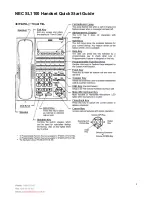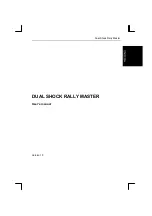
5-31
Chapter 5 AN100U/UX Troubleshooting
Redline Communications Inc. Confidential and Proprietary
CRC error rates may not always be the ideal metric for link quality, as there must be traffic
present in order to see CRC error rates and then interpret it in a meaningful way. You could
find yourself in a position of not detecting any CRC errors (as a result of there being no
traffic) while still observing subscriber unit de-registrations as a result of significant uplink
or downlink MAC management interference.
Identifying the presence of interference when no CRC errors are observed is done
primarily through the interpretation of subscriber unit behavior and event log analysis. The
SU's provide a great deal of information in their event logs regarding the wireless channel.
Along with entries such as periodic channel maintenance messages and service
provisioning details, it is normal to see intermittent wireless error messages when the
subscriber unit is unable to decode a frame header, or the CRC fails on a wireless packet,
etc. These types of errors will occur occasionally during day-to-day operation. However,
when the subscriber unit starts to report significant numbers of wireless errors, or even
constantly, then interference is the likely cause.
Wireless interference most often generates subscriber unit messages describing some
form of packet loss or modem error. For example, a "DLFP Error" means that the frame
profile sent at the beginning of the downlink portion of the frame was corrupted, resulting
in the loss of the entire frame. This message is particularly telling since the DLFP is
transmitted at BPSK1/2, meaning that the interference would likely have to be very strong
in order to corrupt this message. Similarly, any modem errors (such as "Spare0 timeout")
imply the corruption of a MAC management message, which are all transmitted at
BPSK1/2, and would again imply fairly strong wireless interference.
The corruption of data bursts is reflected via the CRC counter, and not logged. The
exception to this is the case of fragmented MPDU's. When a wireless packet is fragmented
across multiple wireless frames, if one of the fragments is lost a message will be logged.
Similar to CRC errors, the scope and location of the performance degradation (e.g.
de-registrations, signal degradation, frame loss) can be used to determine the source of
the interference. For example:
•
Does the issue occur network-wide, or only on a single sector controller?
•
Are multiple subscriber units affected simultaneously, or is the effect more sporadic
and scattered?
•
Of the subscriber units that are affected, what do they have in common? Do they all
use the same modulation/coding rate? Do they all have a similar azimuth? You can use
the RMS or Syslog service to keep track of the rates and times of de-registrations.
•
Is there a particular time of day when the rates are better or worse?
•
Has the rate of de-registration increased since first observed, or has it remained
constant?
All of this information can be useful when trying to isolate the source of interference.
In some circumstances, your devices may experience interference, which is not observed
in the usual signal quality statistics. In this case, connectivity issues may be the only
symptom of the wireless interference. You should first eliminate network and
configuration-related de-registrations before attempting to troubleshoot possible wireless
interference issues.
















































